LOGIN - TOURISM PROFESSIONALS
Trusted & professional DMC & Tour Operator in Vietnam
WITH A PROFESSIONAL ACCESS, YOU WILL HAVE ACCESS TO:
- Our complete production (tours, excursions and personalized modules).
- Our Toolbox (unique documents about each of our destinations that will help you in providing detailed information to your clients).
- Our highlights, recommendations, newsletters and many other practical contents.
Unusual things to do in Hanoi Old Quarter
Overview of the Hanoi Old Quarter
Living Tapestry of History and Modernity
The Hanoi Old Quarter is a maze of narrow streets steeped in history yet buzzing with modern energy. As you wander through these lanes, you encounter ancient buildings that stand side by side with contemporary cafés and boutique shops. The area’s architecture reveals layers of time—from remnants of French colonial influence to traditional Vietnamese designs—that coexist harmoniously. Every street corner serves as a living testament to the resilience and cultural richness of Hanoi, inviting visitors to experience a daily blend of time-honored traditions and modern life.
In this vibrant district, the local community and its day-to-day activities are on full display. The sounds of street vendors, artisans at work, and market haggling fill the air, creating an atmosphere where history is not just observed but truly lived. It is a place where every stone and mural whispers tales of a bygone era, yet pulses with the dynamic energy of the present.
Architectural and Cultural Fusion
The visual narrative of the Old Quarter is one of intricate details and cultural confluence. As you stroll down its narrow lanes, you’ll notice how traditional Vietnamese structures mingle with colonial-era facades, creating a unique urban landscape. The ornate details carved into wooden doors and the faded yet beautiful murals on old walls speak of generations past. This area is not merely a relic of history but a vibrant living museum that continually evolves while preserving its authentic charm. The fusion of architectural styles in the Old Quarter provides a rich backdrop to the sensory experience that awaits every visitor.
Unique Attractions in the Old Quarter
Hanoi Train Street
Hanoi Train Street is perhaps one of the most striking features of the district. In a narrow lane that seems almost impossibly small, a railway track runs perilously close to local homes and bustling street life. This unusual sight is where modern transit meets centuries-old urban fabric. The buildings along the track boast weathered facades, decorated with faded murals and intricate woodwork that have withstood the test of time. When the train arrives, its rhythmic clatter and blur of motion create a dramatic spectacle against the backdrop of ancient walls.
This convergence of modernity and tradition offers a sensory feast: the metallic hum of the train, the vibrancy of daily life, and the enduring presence of historical structures all combine to create a uniquely Hanoi experience. The scene is both thrilling and a poignant reminder of how seamlessly modern life can intertwine with history.
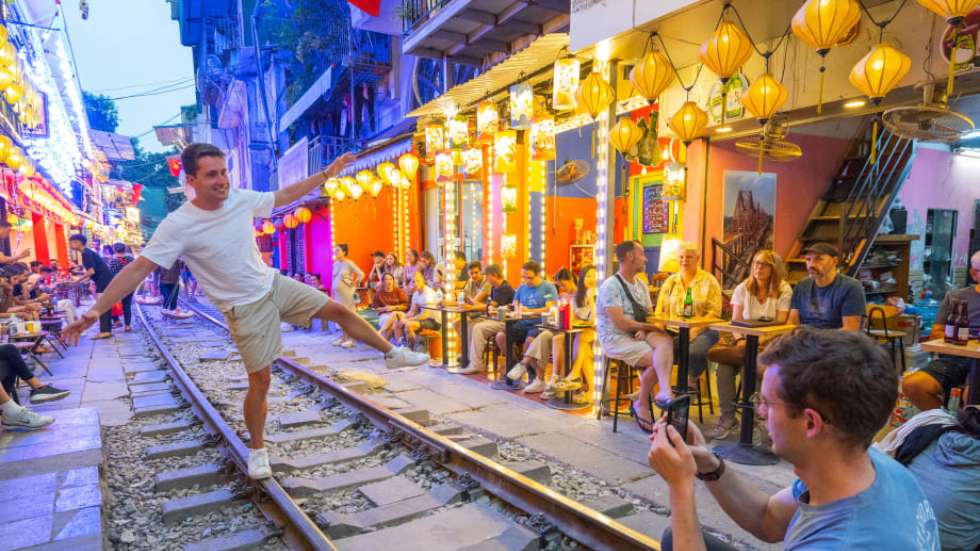
Source: Internet
Traditional Water Puppet Show
Another cultural jewel of the Old Quarter is the traditional water puppet show. This art form, which originated in the rice paddies of northern Vietnam, brings rural legends and local folklore to life in a captivating performance. The stage, set on a shallow pool of water, is where intricately carved wooden puppets perform gracefully under the skilled manipulation of unseen puppeteers.
Accompanied by traditional music—often the gentle strumming of bamboo instruments—the performance transports viewers to a time when ancient myths and everyday life were celebrated through art. The intimate theater setting within the Old Quarter makes the water puppet show a must-see cultural experience, revealing the creative spirit and deep-rooted traditions of Vietnamese people.
Cyclo Rides
For those looking to explore the city at a leisurely pace, a cyclo ride offers an intimate view of daily life. These pedal-powered vehicles, often vibrantly decorated, meander slowly through the narrow alleys and busy markets of the Old Quarter. Riding in a cyclo allows you to experience the true heartbeat of the city—from the interplay of light and shadow on ancient brick walls to the bustling street scenes unfolding before your eyes.
Every twist and turn along the route reveals unexpected details, such as hidden temples, local vendors engaged in conversation, and the subtle charm of centuries-old architecture. This mode of transport is not only a means of getting around; it’s an invitation to absorb the local rhythm and to witness firsthand the organic pace of Hanoi’s street life.
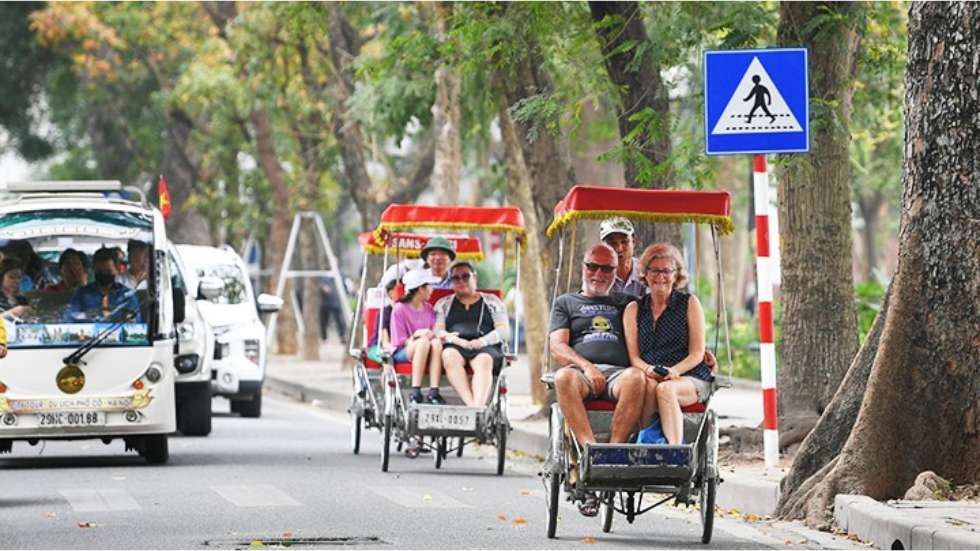
Source: Internet
The Charm of Egg Cafés
In the midst of historic streets, Egg Cafés have carved out a niche as a modern yet distinctly local phenomenon. These cafés offer a unique twist on the traditional coffee experience by serving the famous Vietnamese egg coffee—a rich blend of robust espresso and creamy, frothy egg. The interiors of these cafés often evoke nostalgia, featuring a mix of vintage décor and contemporary art that creates a warm and inviting ambiance.
As you settle into one of these intimate spaces, the soft murmur of conversation, coupled with the aroma of freshly brewed coffee and baked goods, creates an environment where modern innovation meets time-honored culinary traditions. It is a perfect example of how the Old Quarter continuously reinvents itself while staying deeply connected to its cultural roots.
The Buzz of Bia Hoi at Ta Hien
Bia Hoi, the locally brewed fresh beer served on Ta Hien street, is more than just a drink—it is a vibrant cultural ritual. In the evenings, the area comes alive with the spirited energy of locals and visitors gathering around small plastic stools and low tables to enjoy this light, refreshing beer. The atmosphere is festive and relaxed, characterized by animated conversations, the clink of glasses, and the glow of neon signs in the background.
The scene at Ta Hien embodies the communal spirit of Hanoi. It is a place where time seems to slow down, inviting people to savor the simple pleasures of life and to connect over shared moments of celebration. The experience of Bia Hoi is a lively reminder of the enduring traditions that define Hanoi’s social fabric.
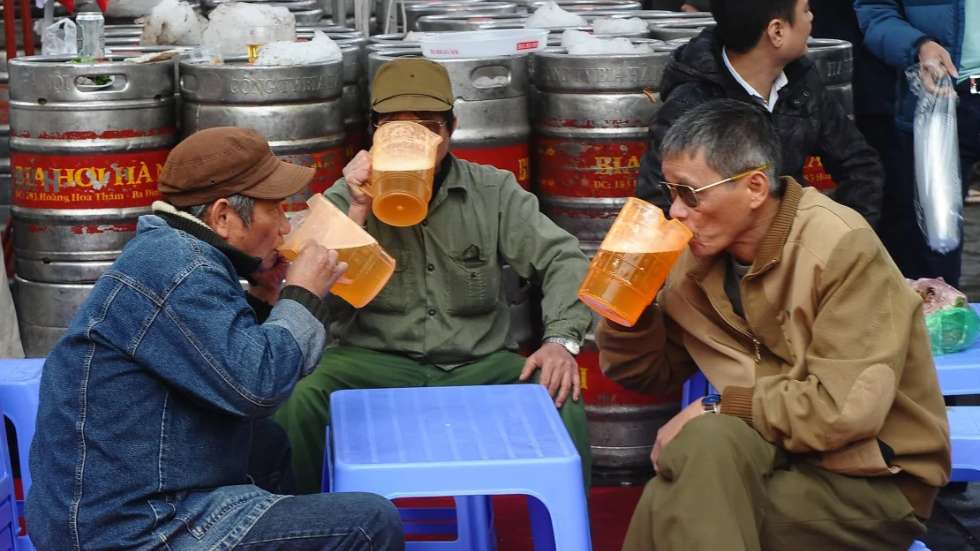
Source: Internet
Historical Landmarks and Monuments
The B52 Wreckage
A short journey away from the lively streets of the Old Quarter reveals the haunting presence of the B52 wreckage. This decommissioned military relic stands as a stark reminder of a turbulent past. Its rusted metal and scarred surfaces speak volumes about the history of conflict and resilience. The wreckage, though weathered by time, evokes a powerful sense of reflection on the struggles and triumphs that have shaped the city.
Hoa Lo Prison (Hanoi Hilton)
Another site of deep historical significance is Hoa Lo Prison, colloquially known as the “Hanoi Hilton.” Once a notorious prison, it now serves as a museum that preserves the poignant stories of Vietnamese revolutionaries. The stark corridors, preserved cells, and historical exhibits provide a sobering insight into a challenging chapter of Hanoi’s past. Visitors are drawn to the raw honesty of this site, which stands as a testament to the strength and endurance of the human spirit.
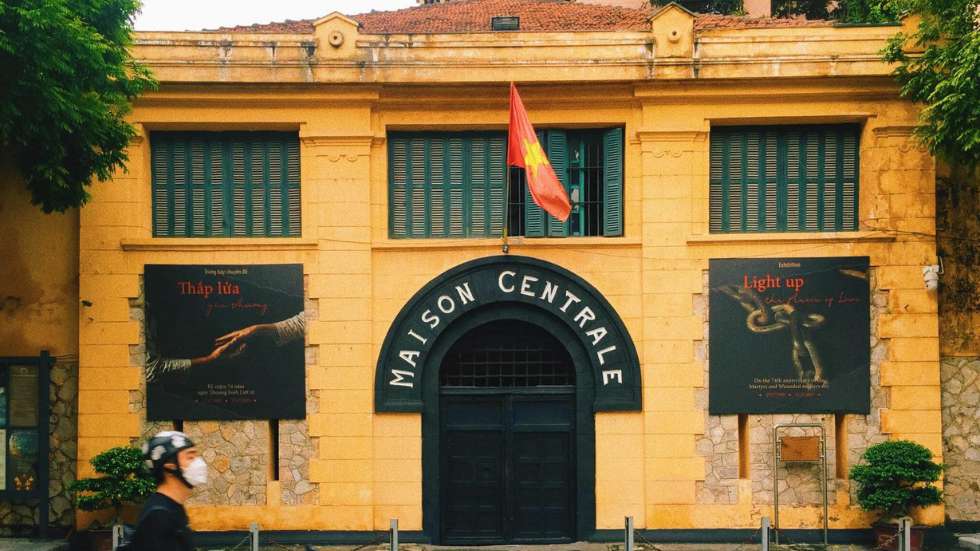
Source: Internet
Cultural Workshops and Art
The Old Quarter is also a haven for traditional arts. Local calligraphy studios tucked away in narrow alleys offer a window into the delicate craft of Vietnamese calligraphy. Inside these modest spaces, the graceful strokes of a brush on paper are transformed into intricate works of art. The calligraphic scrolls that adorn the walls narrate stories of centuries-old traditions and scholarly pursuits. This art form is a living expression of cultural identity and serves as a quiet celebration of the refined aesthetic sensibilities that have been passed down through generations.
Culinary and Market Experiences
Hanoi Street Food Culture
Hanoi’s street food is a vibrant tapestry of flavors, aromas, and colors that capture the city’s culinary heritage. As you wander through the bustling streets, the enticing aroma of simmering broths and sizzling woks fills the air. Traditional dishes such as pho, banh mi, and fresh spring rolls are prepared with a meticulous attention to detail, reflecting the region’s rich culinary traditions. Street vendors expertly balance indigenous flavors with influences from centuries of trade, offering a sensory journey that is as educational as it is delicious.
Each stall and food cart in the Old Quarter contributes to a dynamic marketplace where the preparation and sharing of food are woven into the fabric of daily life. The energy of these food markets, with their colorful displays of ingredients and the lively banter of vendors, provides a vivid snapshot of Hanoi’s vibrant street culture.
Immersive Hanoi Cooking Classes
For those interested in diving deeper into the culinary arts, Hanoi cooking classes offer an immersive experience into the secrets of Vietnamese cuisine. These classes take place in intimate kitchens where traditional recipes are passed down from master chefs to eager learners. The experience is multi-sensory: you’ll hear the rhythmic chopping of fresh herbs, inhale the fragrant aroma of spices, and witness the careful blending of ingredients that create signature Vietnamese dishes. This hands-on approach not only demystifies the art of local cooking but also provides an enriching encounter with the cultural heritage of the region.
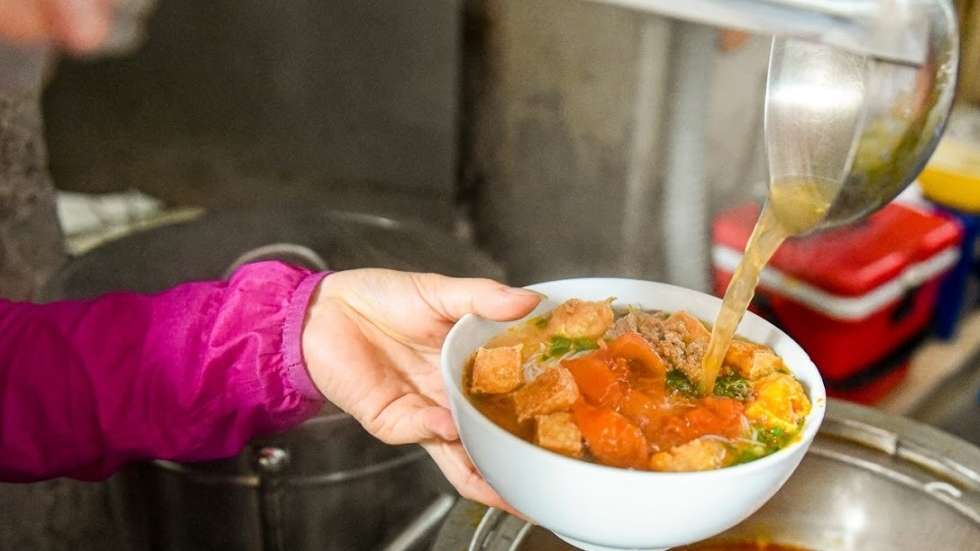
Source: Internet
Exploring Beyond the Urban Core
Scenic Urban Landmarks
Beyond the narrow alleys and vibrant street scenes of the Old Quarter, several urban landmarks stand as monuments to Hanoi’s storied past. The Ho Chi Minh Mausoleum, for instance, is a solemn structure built in a style that echoes both traditional Vietnamese and Soviet influences. Its grand columns, intricate ornamentation, and carefully maintained surroundings reflect the deep national reverence for its founding father. This monumental site invites quiet contemplation and serves as a reminder of Vietnam’s revolutionary history.
Equally enchanting is Hoan Kiem Lake, which lies at the very heart of the Old Quarter. Steeped in myth and history, the lake is bordered by ancient trees, stone bridges, and a small temple dedicated to a legendary turtle. Whether viewed at dawn with its soft reflections or in the glow of evening lights, Hoan Kiem Lake offers a serene contrast to the energetic streets, inviting visitors to pause and absorb its timeless beauty.
Architectural Marvels and Urban Explorations
Dong Xuan Market is another focal point of local life, offering a glimpse into the everyday commerce of Hanoi. This sprawling indoor market is a sensory delight, where the vibrant colors of fresh produce mingle with the aroma of spices and the buzz of lively bargaining. The historic architecture of the market—characterized by weathered floors, traditional signage, and narrow passageways—adds to its authentic charm, making it a microcosm of Hanoi’s cultural diversity.
Long Bien Bridge, an enduring relic of the French colonial era, spans the mighty Red River with a rugged yet elegant presence. The iron framework of the bridge, softened by time and the elements, stands as a monument to the resilience of the city. Whether bathed in the golden light of sunrise or silhouetted against a vibrant sunset, Long Bien Bridge offers breathtaking panoramic views and a quiet space for reflection.
Lesser-Known Treasures
Tucked away from the more trodden paths of the Old Quarter is the 87 Ma May Old House—a quiet relic of traditional Vietnamese architecture. This centuries-old residence, with its high ceilings, wooden beams, and intricately carved lattice work, offers an intimate glimpse into a bygone era of family traditions and artisanal craftsmanship. The faded walls and preserved furnishings evoke a nostalgic ambiance, allowing visitors to step back in time and appreciate the subtle beauty of Hanoi’s historical residential life.
A Journey Through History and Culture
The Hanoi Old Quarter is not just a collection of historical sites; it is a living tapestry where every street, building, and market tells its own unique story. The harmonious blend of architectural splendor, vibrant street life, and deeply rooted cultural traditions creates an experience that is both visually stunning and emotionally stirring. From the dramatic spectacle of Train Street and the evocative beauty of water puppet shows to the intimate charm of ancient calligraphy studios and bustling food markets, each element contributes to an unforgettable portrait of Hanoi.
As you explore this dynamic district, you will find that every detail—from the texture of weathered brick to the aroma of simmering spices—captures the enduring spirit of a city that cherishes its past while embracing the future. The Hanoi Old Quarter invites visitors to experience a rich cultural mosaic where every moment is a step into history and every corner holds a new discovery.
Conclusion
In conclusion, the Hanoi Old Quarter stands as a treasure trove of history, culture, and vibrant street life. Every alley, monument, and market encapsulates the rich heritage and enduring spirit of this remarkable city. Through detailed descriptions of unique sites—from the mesmerizing Train Street and age-old water puppet shows to the reflective ambiance of the Ho Chi Minh Mausoleum and the bustling energy of local markets—we have journeyed deep into the heart of Hanoi. This living tapestry offers an immersive experience where every stone and story reveals another facet of the city’s captivating legacy.
.jpg)
.jpg)
.jpg)
.jpg)
.jpg)
.jpg)
.jpg)
.jpg)
.png)
.jpg)
.jpg)
.jpg)
.jpg)
.jpg)
.jpg)
.jpg)
.jpg)
.png)
.jpg)